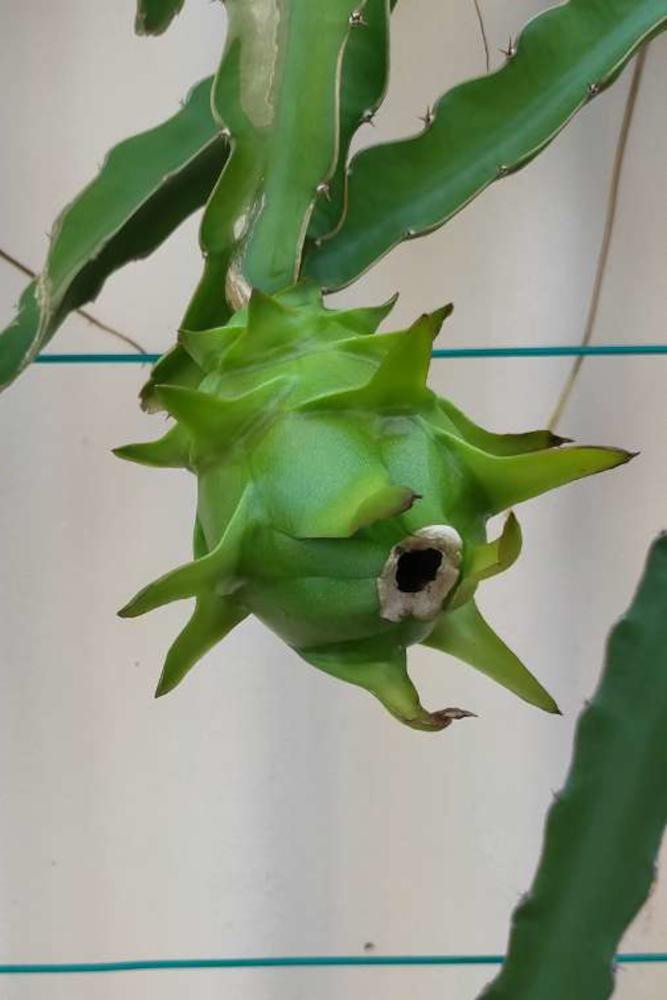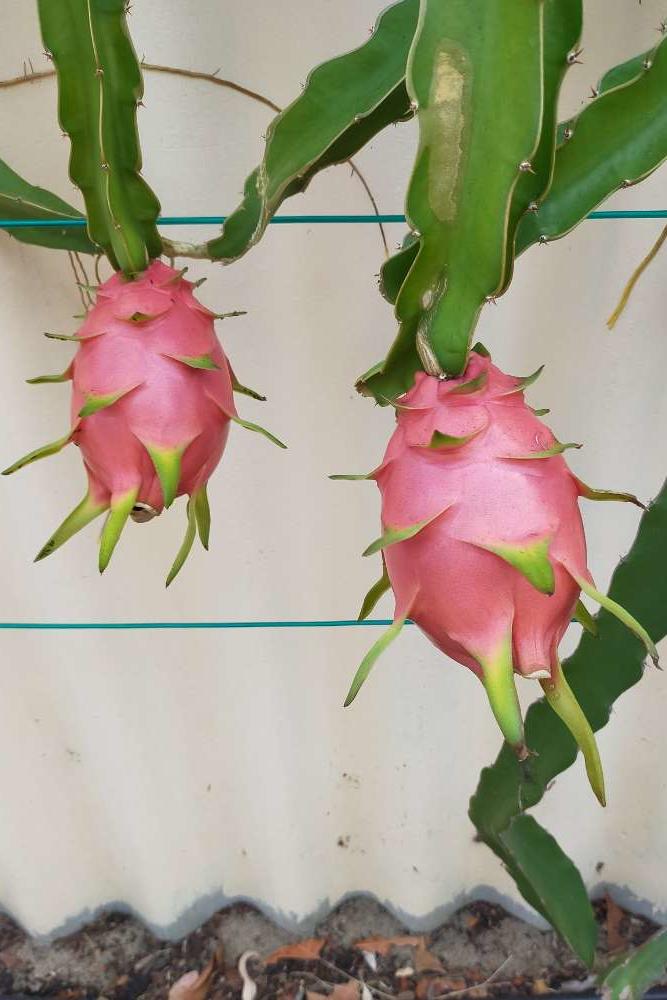Overview
Hylocereus undatus, cv. Vietnam White
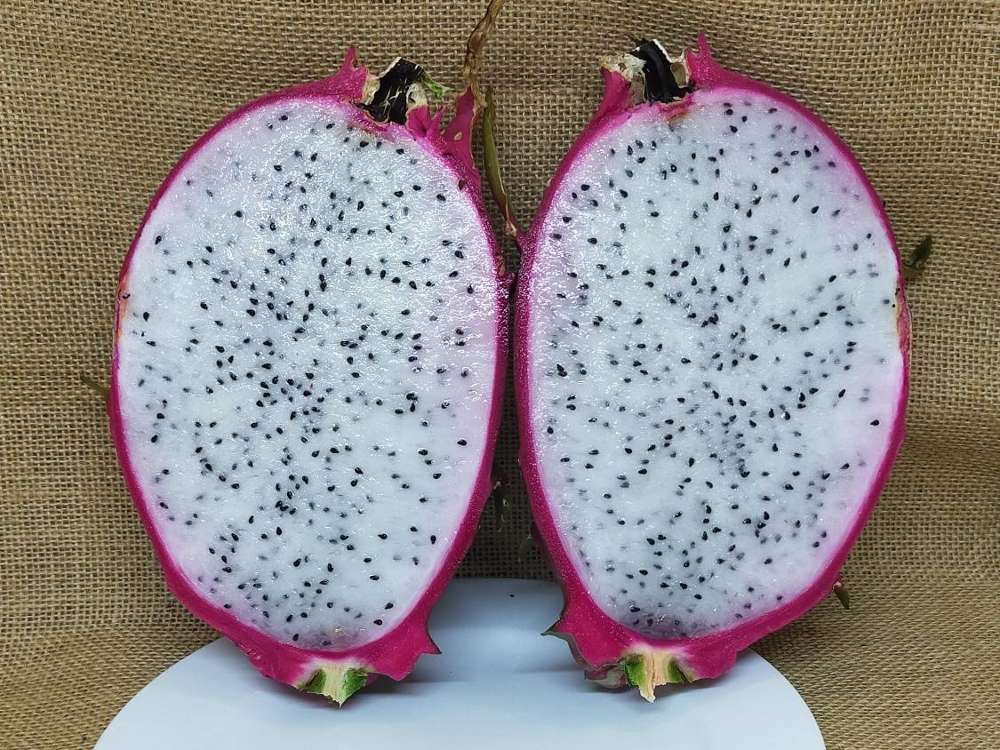
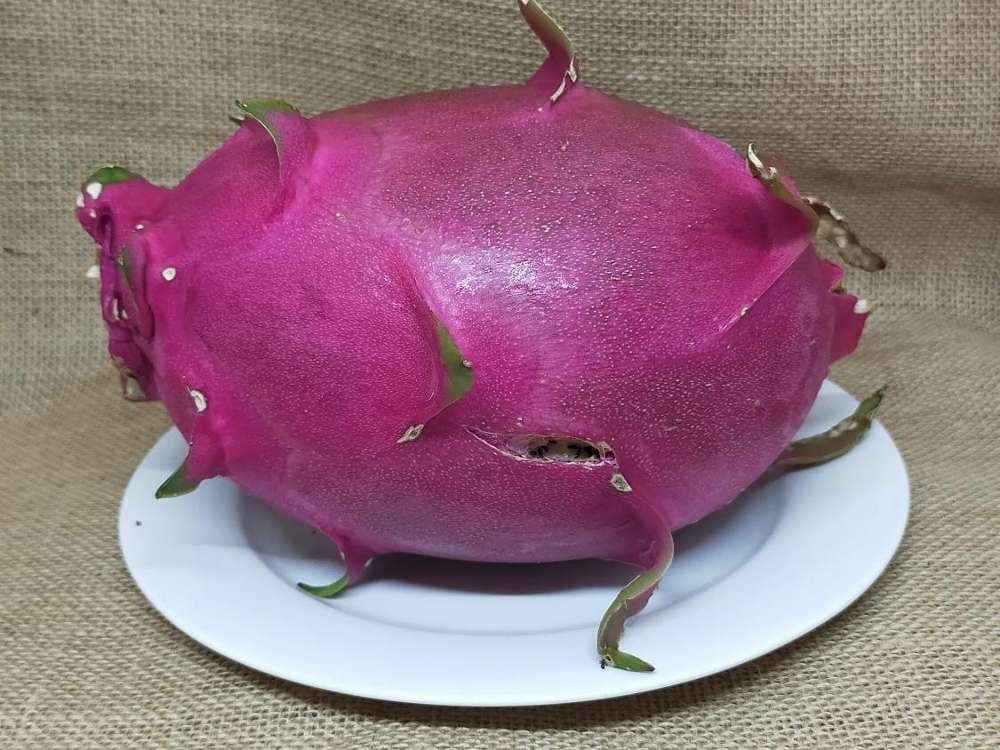
Other names: Pearl, Commercial White
Pollination: self-fertile
This is the first variety of dragon fruit I ever collected, and so holds a special place in my heart as it was what started me on this obsession! As can probably be inferred from the name, this variety is one of a selection of dragon
fruit cultivars originally from Vietnam. Due to its high sweetness and oval shape, I have a hunch that this is the ‘Pearl’ cultivar. There is a real stigma about white dragon fruit tasting terrible, but this is certainly not the case
with my cultivar of Vietnam White. Much of the criticism comes from shop-bought fruit which were harvested too early, though there are some terrible tasting white varieties out there, some of which I have grown all the way to fruition
only to rip out in disgust, so make sure you buy from a reputable seller.
This variety is an average grower and is reasonably tolerant of both the heat and the cold.

Buds
In my experience, this variety buds from early December (early summer) to late February, and takes a few years before reaching full production. Buds are typically a pale-yellow colour when they first emerge and look like little droplets. After a few days they will develop a light green colour which they retain throughout maturity.
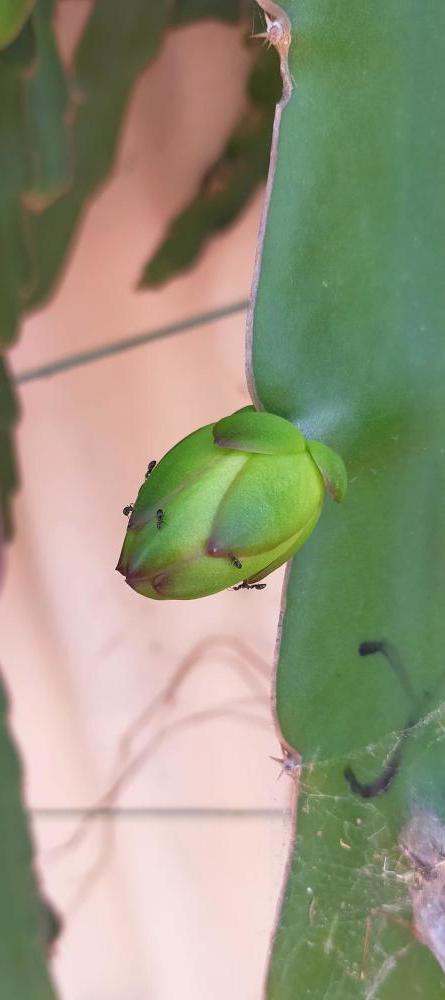
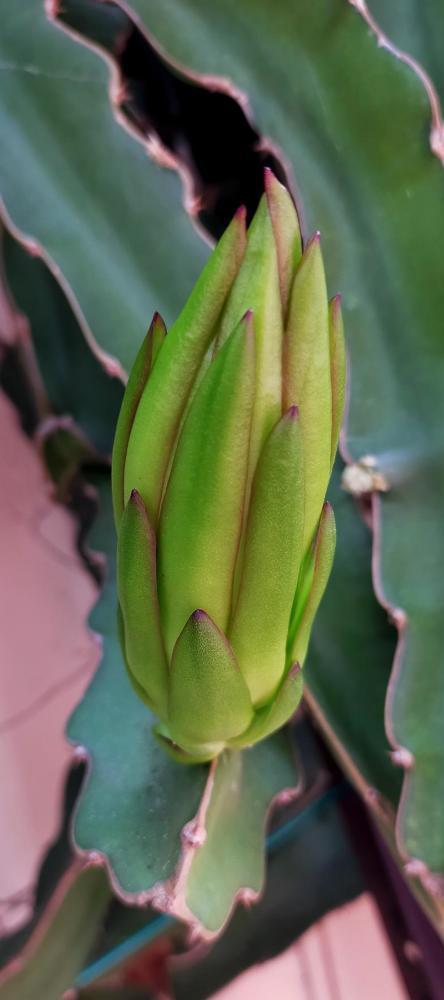
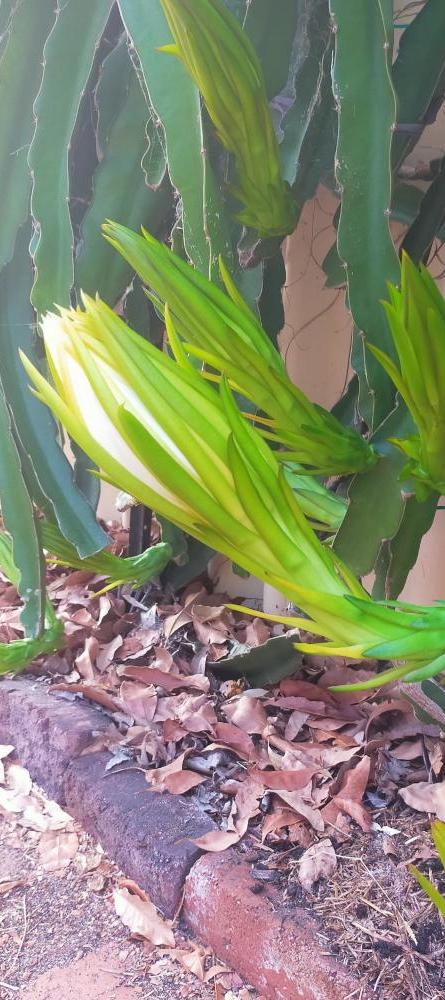
Flowers
Vietnam White has a beautiful, large flower, with a short stigma contained within its anthers. This allows it to set fruit on its own with little effect on fruit size, making it a beginner friendly choice. It even managed to
self-pollinate through
light rain, which will hinder most varieties as the rain washes away much of the pollen and the moisture lowers its viability.
Vietnam White is a good source of pollen for other white varieties such as Isis Gold due to it often
flowering on the
same or similar nights. However, it does not produce pollen to the extent of Common Red.
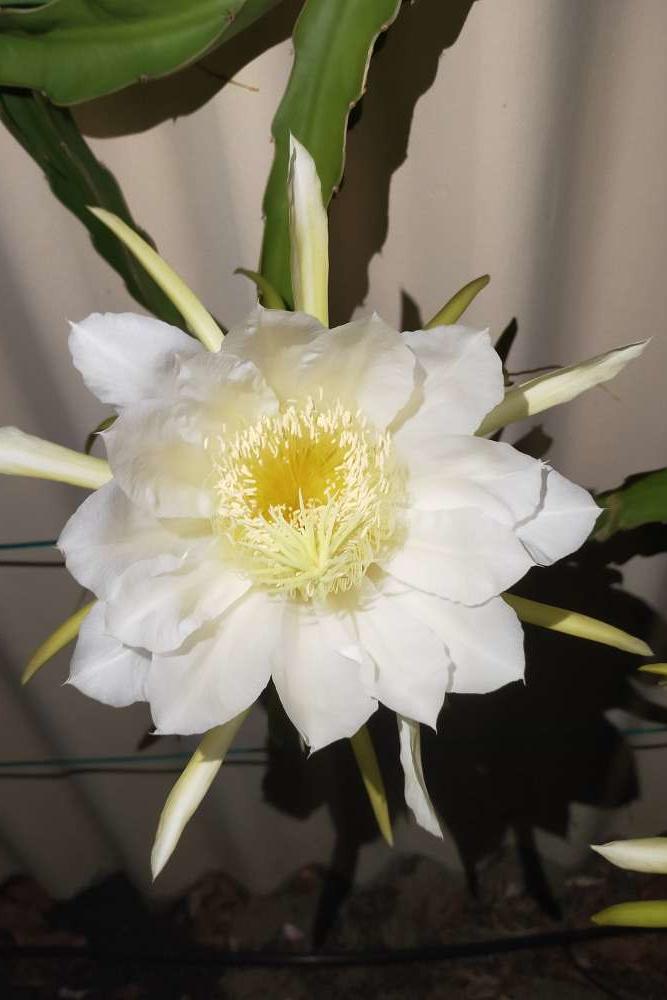
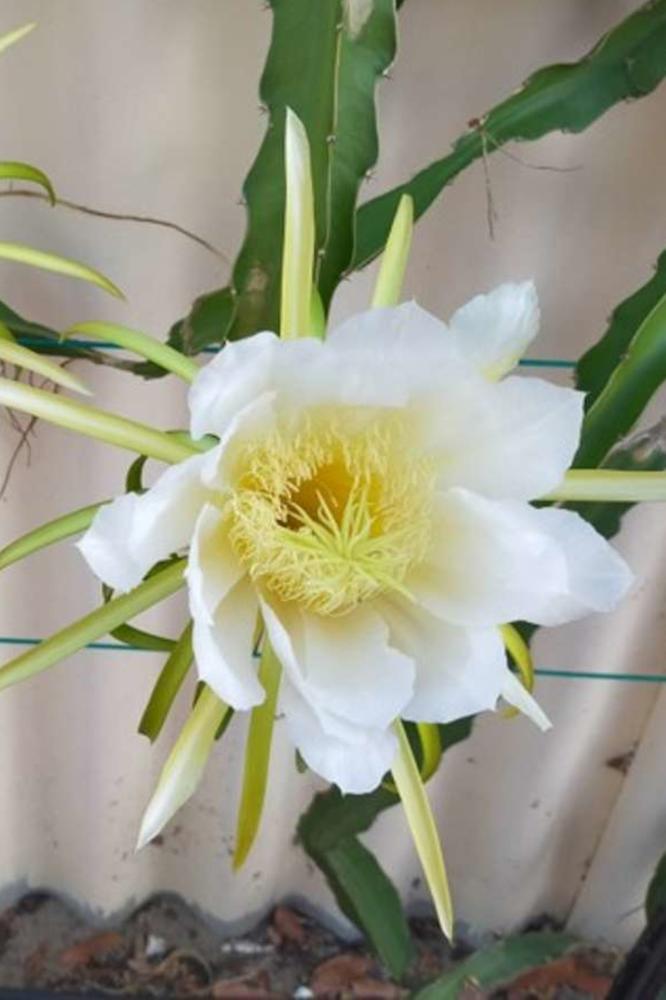
Fruit
My first few seasons of Vietnam White fruit were minimal, but the fruit were all above half a kilogram, with one – my biggest dragon fruit to date – weighing in at 993 grams. With a rise in buds in the following seasons, about half
of
the fruit stayed a similar size while the rest dropped to around the 250-gram mark. This is interesting when compared to other varieties in which all fruits dropped in size with more buds. I would recommend bud thinning for bigger and
tastier fruits, however.
This variety is difficult to pick at
peak ripeness due to its long time in the pink stage. Too soon and it's sour and slightly acidic; too late and the seeds sprout inside the fruit, the sweetness drops, and the texture becomes less smooth. I have found that about a week
and
a
half after fully changing colour is ideal in summer, and a bit longer when it cools down. When you get it right it’s a real joy to eat.
